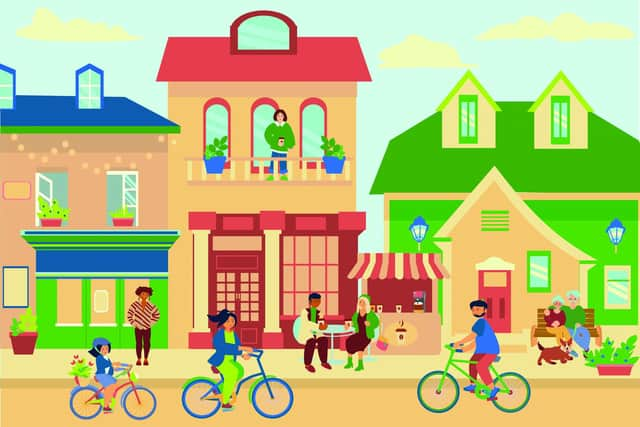Kirsty McLuckie on superb suburbs
The suburban stereotype is one of bland housing – rows of inter-war bungalows that are abandoned during the day as commuters take the train into the city centre, parodied in the dull routine that Tom and Barbara were trying to escape in Surbiton in ’70s sitcom The Good Life.
During the pandemic, we were told that there was a mass migration out of the cities to the countryside and coast, with the trend somewhat reversing with the return to working in the office.
Advertisement
Hide AdAdvertisement
Hide AdBut actually, these movements are minimal changes to a UK population that is overwhelmingly suburban.


Estimates put the suburban population at around 80 per cent of the country, with city dwellers and rural households making up roughly equal shares of the rest.
A study on suburbia by Savills this week reveals that over the past two years house prices in the most desirable suburban locations in the UK have risen by 16.8 per cent, with 10.7 per cent growth in the past year alone – a faster acceleration than the country market’s 14.6 per cent.
The study looks at some of the most desirable suburbs in the UK and finds that these areas are becoming more popular than ever, whether they are in the outer reaches of London, Manchester, Cardiff, Glasgow or Edinburgh.
The top performing suburb north of the Border, according to the statistics, is Morningside. Prices here have risen 43 per cent since 2012, taking the average house price in 2022 to £433,232.
But you could argue that Morningside has never really been out of favour and looking at the area now, it is difficult to see why anyone with the means to buy a home here wouldn’t be attracted to its obvious benefits.
It has retained its feeling of a village. The independent shops which line Morningside Road give a hint of the lifestyle on offer – fishmongers, butchers and bakeries are side by side with coffee shops, a cinema and theatre, as well as some world-class restaurants. It is less than two miles from the city centre, with great transport links and plenty of quieter paths to walk or cycle.
I spent last weekend staying with friends in another top-performing suburb on Savills’ list, Wimbledon. It is broadly comparable to Morningside – leafy and village-like, with fast links to the city and large Victorian houses and flats. Like Morningside, artisan food shops jostle for custom in the town centre .
Advertisement
Hide AdAdvertisement
Hide AdThe rise in house prices is similar too, at 48 per cent since 2012 – though that brings the Wimbledon average to £2,233,469.
It is not just property that is pricey. The area is currently gearing up for a famous tennis tournament and the influx of visitors might explain how I came to buy a small punnet of cherries in a very pretty fruit shop, which I later realised – to myhorror – had cost £13.50.
Morningside property might be expensive by Scottish standards but even the trendiest shop there doesn’t require a second mortgage to get your five-a-day.
Advantage Edinburgh.
- Kirsty McLuckie is property editor at The Scotsman